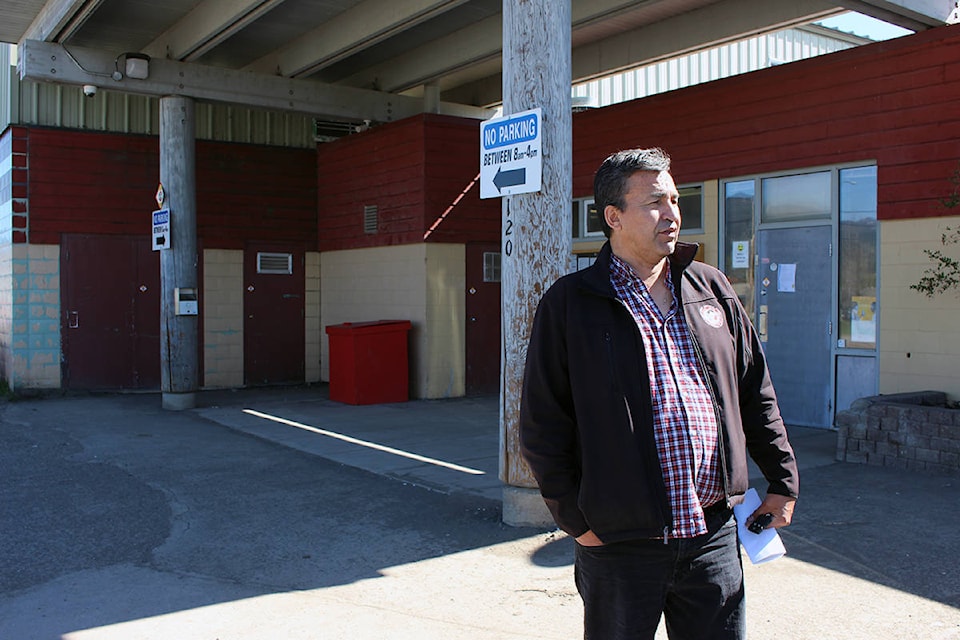For Pete Erickson, a hereditary chief of the Nak’azdli First Nation, finding that perfect medium between economic support and natural resource conservation is key when looking into he future of British Columbia’s forest industry.
“When you look at the impact humans have had on the environment, it’s going to kick us in the face,” says Erickson. “We’re going to have to look at it, sooner rather than later. Our salmon is two per cent of historic levels. Our moose have dropped over 50 per cent just in the last 10 years. The quality of our water is degrading really, really quickly. I think it is a matter of us hopefully being able to mitigate the damage that we’ve caused.”
Erickson, who works as the natural resource sector liaison for the Nak’azdli Whut’en and the British Columbia Ministry of Forest, Lands and Natural Resource Operations, believes that there are at least two major factors that need to be addressed when it comes to B.C. forestry operation in the future.
“One big factor is that First Nations everywhere want our land recognized,” says Erickson. “Second of all, we have climate change biting at everyone right now. I think that we need to really start implementing an extensive, hands on approach to forests and lands. Getting people back out in traditional units, the way we used to care for the land, is going to be an immediate need.”
Erickson also happens to sit on the Board of Directors for the John Prince Research Forest, an institution that is dedicated to developing unique and innovative approaches to natural resource conservation. The research forest is able to offer their own sort of medium, as representatives and researchers from indigenous communities, like Erickson, are able to work with academic institutions to further examine and create solutions to common environmental issues.
“The John Prince Research Forest itself advances in forest technique, such as trying different methods of logging to see the impact, whether that be full clear cut logging or also selective logging,” says Erickson. “They are also combining that with animal studies.”
For Erickson and the Nak’azdli Whut’en First Nation, understanding the cultural, historical and practical significance of recognizing and reinvigorating the traditional land on which logging occurs is a big part as to why the John Prince Forest Research institute is making some interesting steps in the right direction.
“The biggest thing that I have about forest research is that it recognizes our historic views of the use of the land,” says Erickson. “Of course there has been a controversy with logging, because logging literally obliterates our ability to use the land. As much as people say, ‘Well, they’re growing it back,’ the massive changes that it causes actually stops traditional use in its tracks.”
Due to an ever evolving environmental, political and economic climate, Erickson says that the overarching goal of the research forest is constantly changing over time. However, one of the driving forces behind the institution is to find a balance between those often volatile factors.
“Obviously, you want to mitigate the damage done by logging, but at the same time, you have to recognize the economics that surround logging,” says Erickson. “I’m not sure if there is an end goal, other than to try to maintain biodiversity while still having the economic engine work.”
“At the present time, everything is a clash. Anytime anything happens now, it seems like there is a big controversy whether it is on the environmental or economic side. We’re trying to work on solutions to try and work along the edge that is in between,” says Erickson.
However, Erickson does believe that humans must take responsibility for the role they have played in climate change and environmental destruction needs to be acknowledged before real progress can be made.
“Nobody wants to be holding or be a part of the smoking gun,” says Erickson. “You’re going to have people from every side saying, ‘Oh no, it’s climate change’ or ‘Oh no, it’s Roundup’ or ‘Oh no, it’s this.’ The fact of the matter is, we need to start with one thing. Look in the mirror, these environmental problems are human caused.”
Finding a middle ground is truly what the John Prince Research Forest strives to accomplish and Erickson hopes that B.C. will be able to discover a way of understanding what needs to be done in the future.
“Hopefully, before we get kicked in the face, we can figure it out,” says Erickson.
